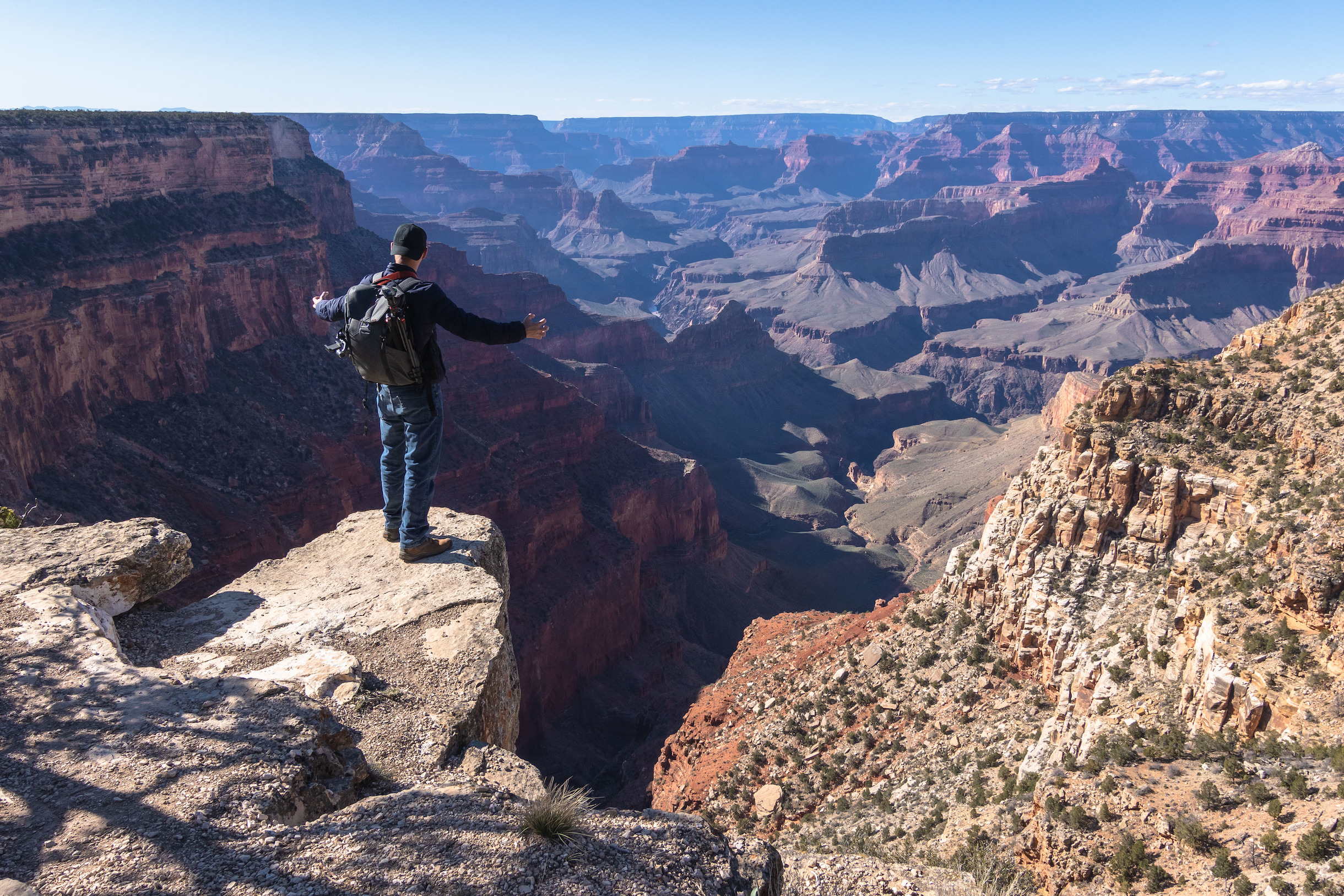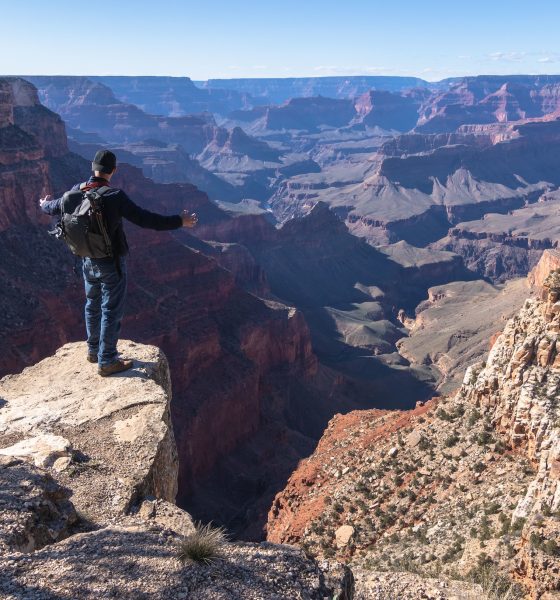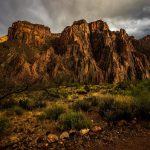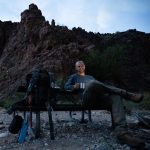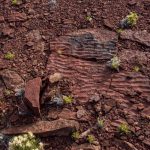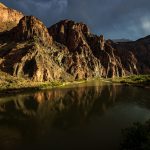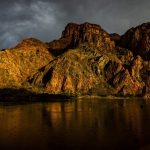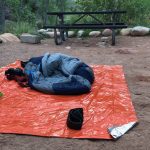I set an ambitious goal to hike 17 miles in 24 hours while putting myself through a miniature survival situation.
Last week, I introduced my new weekly blog series, Behind The Lens, where I share adventures from what I do when I’m not photographing rocket launches. Today, we go to the Grand Canyon on a hike that I’d never attempted before but it was time I’d done something like it in my life.
I arrived here in the ’80s and like most people, was raised to operate in society. I hadn’t had a pleasant upbringing but I adapted in situations, worked hard, always had accomplished goals and was determined to survive. If we’re lucky, we get 100 years on this planet, which is a tiny pixel in the big picture.
The Grand Canyon is one of the most studied geologic landscapes in the world, 40 distinct layers of time are represented in the walls which span 2-billion years from top to bottom. The name certainly defines it in every sense of the meaning. One can evolve in reverse, or devolve, on the way down and evolve again on the way up. No better place, I think, for a soul searching adventure.
Photographing rockets had put me in touch with physics and the human potential to explore the cosmos. Yet, something was still missing – a human element connected with nature. I got a glimpse of our future and felt part of it but I hadn’t felt our past.
Hiking to the bottom of the canyon and out again is what I felt I needed to do. The more I thought about it and planned for it, the more sense it made to challenge myself and experience Earth as a homo sapien.
I set an ambitious goal to hike 17 miles in 24 hours while putting myself through a miniature survival situation.
Inside a new camera bag designed for hiking and photography, I packed all the supplies I’d need for such a journey. Food, water filter and 3-liter pouch, a burner and first aid kit. I also brought a lightweight sleeping bag and emergency blanket made of the same material as the walls of the Lunar Lander. Just in case, I packed my license too so that I could be identified.
The trailhead began at 7,260 feet (2,212 meters) in altitude. Signs warn of altitude sickness if you try to go to the bottom and back up again on the same day. “There’s no water on this trail.”, said a warning sign. Safety was paramount, so I planned to abort the hike before I’d be unable to return without sufficient water if I knew I wouldn’t make it all the way to the next source. Three liters in a pouch on my back would have to get me 7 miles (11.3 kilometers).
On the way down, I passed through multiple layers of ocean and desert. I saw seashells and barnacles in the walls, then layers of sandstone and layers of red rock in which l found a worm fossil. Near the bottom was an unusual spot with large boulders and jagged red rock with beautiful flowers. While squeezing a handful of gravel, I browsed around in the silence and discovered a unique pattern, a plate with ripples which was a fossil indicating that I had been standing on the floor of an ancient ocean. By this time, I’d been hiking for 5 hours and I was out of water.
The sun was setting while I was in search of a nearby water source. The one I had planned to refill with was down for repairs. Deep inside Earth now, the most beautiful shadows and highlights were being cast on the pink granite walls. I decided this is where I’d cook dinner. While eating re-hydrated chicken and pasta as the main course with a cup of strong coffee, I sat back and soaked in the experience. A park ranger approached me, saw my gear and asked if I was camping. He said someone who had reserved a site didn’t show up and offered it to me. One of these coveted campsites has a 6-month waiting list. Although I didn’t want to miss an opportunity like this, I feared to sleep without a tent.
The campsite was located next to a raging stream which kept the area cool. The ground was clean and level but spiders and other insects were crawling on it. A pole stood in the corner to hang my bag because rodents would crawl into it on the ground – I’d be on the ground though, I thought to myself…
- Granite walls inside the Grand Canyon illuminated with evening Sun. I decided this was the location I would cook dinner and enjoy a strong coffee. (Photo: TomCross)
- Enjoying a cup of coffee while soaking in the experience after dinner. (Photo: TomCross
- Fossilized ripples of sea floor. (Photo: TomCross)
- My sleeping arrangement in the campsite was a sleeping bag on top of an emergency blanket. (Photo: TomCross)
I figured I would use the emergency blanket as a ‘footprint’ and sleep in my bag on top of that. Laying down now, checking for insects every 10 minutes or so, I found a few upsidedown on the slick foil of the blanket and brushed them off. I laid awake looking up at the sky, still concerned about spiders crawling on me or a rodent getting into my bag. My mind wandered and got lost watching the clouds pass overhead realizing we are all on a spaceship traveling through the Milky Way. I took a few photographs as the white noise of the raging water drowned out my fears. I fell asleep as peacefully as ever.
I woke up to the smell of campfires and bacon which gave me an appetite, so I got up and started breakfast. Mules across the river were delivering supplies to camp while another team of mules behind them was bringing campers who’d decided not to hike down. For breakfast, I had a fulfilling bowl of oatmeal made for strenuous hikes with fruit, extra salt, and sugar, plus 2 cups of strong coffee. I drank plenty of water and refilled my 3-liter pouch for the hike out. The route was considered the easy trail, I did not foresee the difficulty I’d experience.
Even though I had been drinking water and eating proper snacks I could feel the effects of dehydration. The trail I was on had the most incredible views, streams, waterfalls, and a lush oasis, then, suddenly it would switch to desert-like conditions. Trail runners were wearing small water bottles on their waist belts and sweating profusely but seemed fine. I asked one of the runners if the next water source was open – he didn’t know. How could he not know if the water source was on or off? I asked another person if the water was on, they didn’t know either. “What’s going on?” I wondered. Mindfulness and communicating the right information are vital. Because hikers didn’t have information about water availability, I began conserving when I was thirsty – Not a good idea.
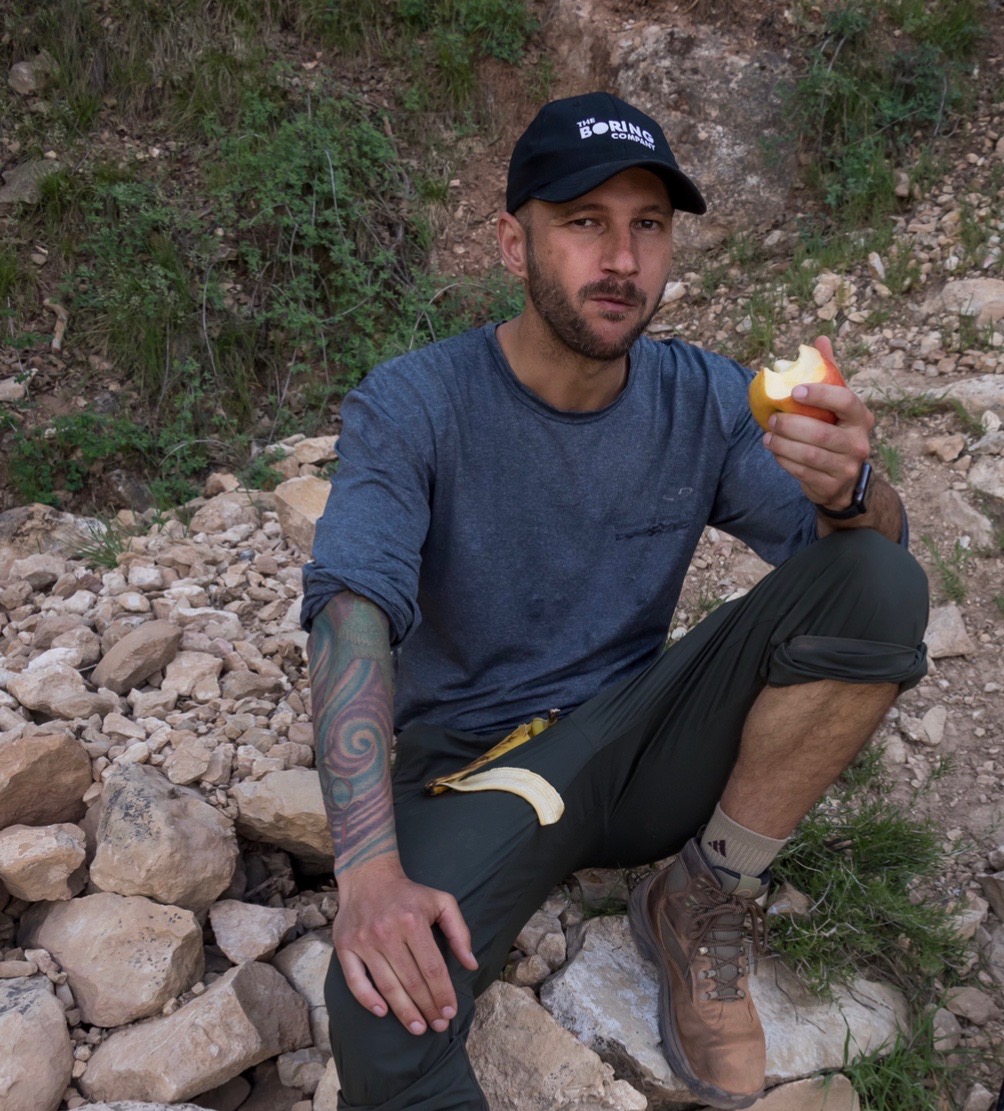
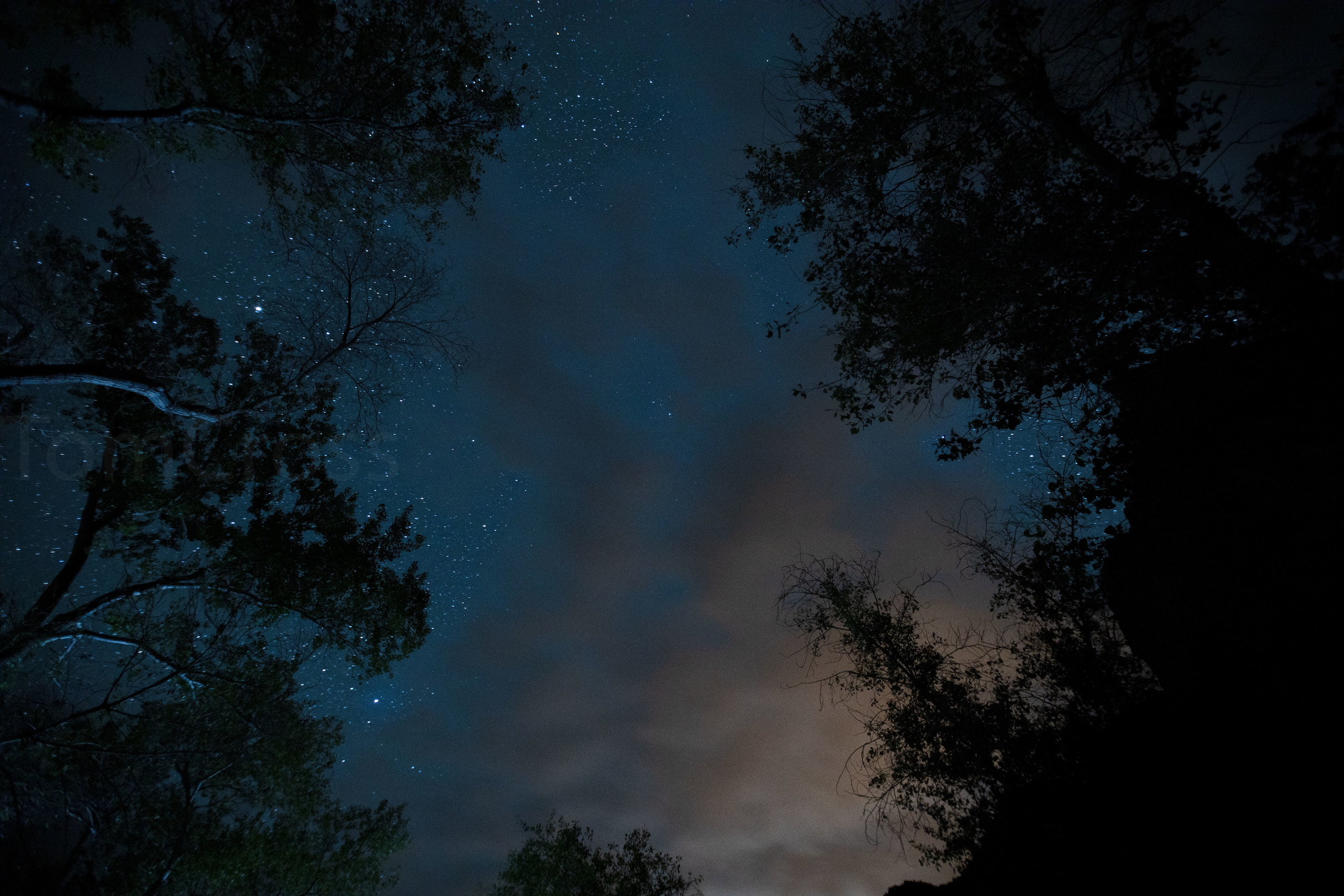
Many treacherous switchbacks, or zigzags, to get up a very steep cliff, 3 more people passed me while briskly walking and I realized I had been slowing down. Hours later I had finally made it to the water source in the center of the trail, it resembled a fountain of youth and many people were using it. How could hikers miss this on their way down? I was perplexed. I drank plenty of water to make up what I’d been conserving, refilled, then began the final trek with fresh socks.
The temperature was decreasing on the way up but I was still sweating too much. The weight of my bag had become uncomfortable and burdensome. Many of the electronics I brought were dead weight – I’ll never do that again. Rest breaks came more often. My calves were painful and normal steps had become quarter steps, my arms would cramp in place if I bent them to adjust my backpack straps. Even my mind was struggling and human instinct was kicking in; I was in bad shape and I knew it. Those who know me, know that I’m capable of pushing myself pretty hard and I was thrilled that I had experienced Earth’s strength, my own man vs. nature moment. Around this time, my Apple Watch knocked on my wrist, a fitness award flashed on the screen ‘Move Goal 300%’. The display read that I had been exercising non-stop for 270 minutes and I had climbed 192 flights of stairs.
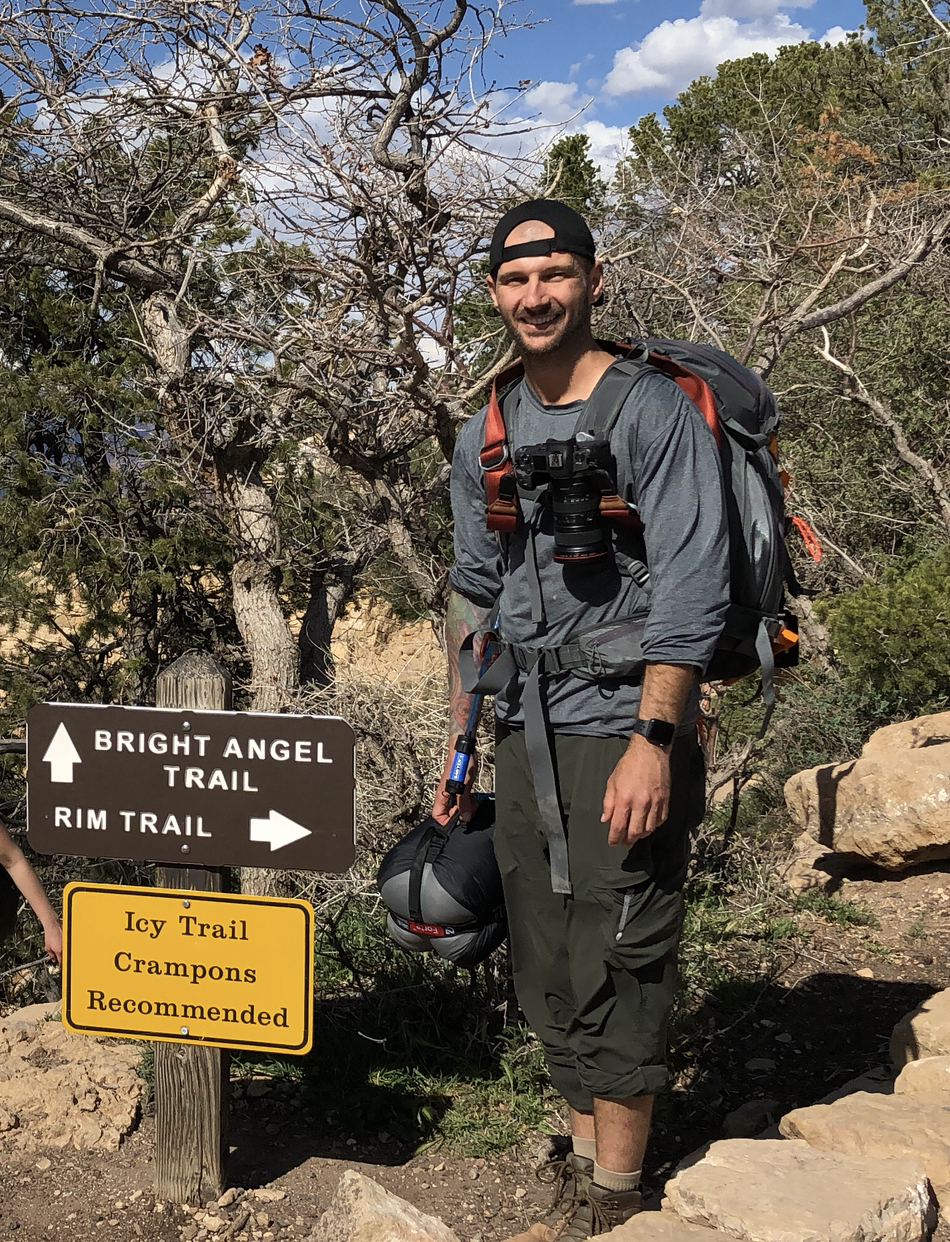
As I neared the top now with 10 minutes of hiking remaining, I texted my friend to meet me down the trail and to bring fruit. I ate bananas and apples, split the load on my back between the two of us and proceeded to hike out together. I touched the trailhead sign to confirm the completion. I had come out of the other side different than I had entered. I still sleep without a tent most times, in fact, I sleep on top of my vehicle quite a bit. I prefer to be exposed and to feel the natural breeze and hear the crickets instead of being enclosed inside a hotel room.
Shortly after this adventure, I’d feel an earthquake for the first time in my life. It’s a misconception that we are all on solid ground. Next week, I camp in the epicenter of the Searles Valley, CA earthquake aftershocks.

Lifestyle
Tesla Model S Plaid battles China’s 1500 hp monster Nurburgring monster, with surprising results
There is just something about Tesla’s tuning and refinement that makes raw specs seem not as game-changing.

The Tesla Model S Plaid has been around for some time. Today, it is no longer the world’s quickest four-door electric sedan, nor is it the most powerful. As per a recent video from motoring YouTube channel Carwow, however, it seems like the Model S Plaid is still more than a match for some of its newer and more powerful rivals.
The monster from China
The Xiaomi SU7 Ultra is nothing short of a monster. Just like the Model S Plaid, it features three motors. It also has 1,548 hp and 1,770 Nm of torque. It’s All Wheel Drive and weighs a hefty 2,360 kg. The vehicle, which costs just about the equivalent of £55,000, has been recorded setting an insane 7:04.957 at the Nurburgring, surpassing the previous record held by the Porsche Taycan Turbo GT.
For all intents and purposes, the Model S Plaid looked outgunned in Carwow’s test. The Model S Plaid is no slouch with its three motors that produce 1,020 hp and 1,420 Nm of torque. It’s also a bit lighter at 2,190 kg despite its larger size. However, as the Carwow host pointed out, the Model S Plaid holds a 7:25.231 record in the Nurburgring. Compared to the Xiaomi SU7 Ultra’s record, the Model S Plaid’s lap time is notably slower.
Real-world tests
As could be seen in Carwow’s drag races, however, Tesla’s tech wizardry with the Model S Plaid is still hard to beat. The two vehicles competed in nine races, and the older Model S Plaid actually beat its newer, more powerful counterpart from China several times. At one point in the race, the Xiaomi SU7 Ultra hit its power limit due to its battery’s temperature, but the Model S Plaid was still going strong.
The Model S Plaid was first teased five years ago, in September 2020 during Tesla’s Battery Day. Since then, cars like the Lucid Air Sapphire and the Xiaomi SU7 Ultra have been released, surpassing its specs. But just like the Model Y ended up being the better all-rounder compared to the BYD Sealion 7 and the MG IM6, there is just something about Tesla’s tuning and refinement that makes raw specs seem not as game-changing.
Check out Carwow’s Model S Plaid vs Xiaomi SU7 drag race video below.
Lifestyle
500-mile test proves why Tesla Model Y still humiliates rivals in Europe
On paper, the BYD Sealion 7 and MG IM6 promised standout capabilities against the Model Y.

BYD is seeing a lot of momentum in Europe, so much so that mainstream media has taken every opportunity to argue that the Chinese automaker has beaten Tesla in the region. But while BYD sales this year in Europe are rising and Tesla’s registrations remain challenged, the raw capabilities of vehicles like the Model Y are difficult to deny.
This was highlighted in a 500-mile challenge by What Car? magazine, which showed that the new Tesla Model Y is more efficient, cheaper to run, and more reliable than rivals like the BYD Sealion 7, and even the nearly 400 KW-charging MG IM6.
Range and charging promises
On paper, the BYD Sealion 7 and MG IM6 promised standout capabilities against the Model Y. The Sealion 7 had more estimated range and the IM6 promised significantly faster charging. When faced with real-world conditions, however, it was still the Model Y that proved superior.
During the 500-mile test, the BYD nearly failed to reach a charging stop, arriving with less range than its display projected, as noted in a CarUp report. MG fared better, but its charging speeds never reached its promised nearly-400 kW charging speed. Tesla’s Model Y, by comparison, managed energy calculations precisely and arrived at each stop without issue.
Tesla leads in areas that matter
Charging times from 25% to 80% showed that the MG was the fastest at 17 minutes, while Tesla and BYD were close at 28 and 29 minutes, respectively. Overall efficiency and cost told a different story, however. The Model Y consumed 19.4 kWh per 100 km, compared to 22.2 for MG and 23.9 for BYD. Over the full trip, Tesla’s charging costs totaled just £82 thanks to its supercharger network, far below BYD’s £130 and MG’s £119.
What Car? Magazine’s testers concluded that despite BYD’s rapid sales growth and the MG IM6’s seriously impressive charging speeds, Tesla remains the more compelling real-world choice. The Model Y just offers stability, efficiency, and a proven charging infrastructure through its Supercharging network. And as per the magazine’s hosts, the Model Y is even the cheapest car to own among the three that were tested.
Watch What Car? Magazine’s 500-mile test in the video below.
Lifestyle
Tesla Cybertruck slapped with world’s least intimidating ticket, and it’s pure cringe
One cannot help but cringe and feel second-hand embarrassment at the idea of a person just driving around with a stack of these babies.

A Cybertruck parked at Stanford Shopping Center in California was recently hit with what might be the most try-hard piece of paper ever slipped under a wiper blade: a “fake citation” accusing the driver of supporting a “fascist car.”
The note, shared on X by Tesla staff program manager Ryan Torres, quickly made the rounds on X, where it quickly gained attention as an example of how not to protest.
The world’s least intimidating ticket
According to the citation, the supposed “violation” was “driving a fascist car.” The remedial action? Take the bus, call an Uber, or ride a bike. The note also dubbed Elon Musk a “chainsaw-wielding Nazi billionaire.” Now, protests against Tesla and Elon Musk have become commonplace this year, but one cannot help but cringe and feel second-hand embarrassment at the idea of a person just driving around with a stack of fake anti-Tesla/Musk citations.
Torres pointed out the irony himself in his post on X. Tesla currently employs over 140,000 Americans, and SpaceX has put the U.S. firmly back at the top of space technology. As Torres put it, maybe the person behind the world’s least intimidating ticket should “read a book on innovation before vandalizing” other people’s property.
Peak performative clownery
Not to mention that the fake ticket’s logic collapses under its own weight. EVs like the Cybertruck are literally designed to reduce emissions, not “destroy the economy.” If anything, Tesla has bolstered the United States’ economy by fueling jobs in engineering, manufacturing, and clean energy. It’s not the first time a Tesla has been the target of vandalism or politically charged notes, but this one stands out for sheer cringe value.
Torres summed it up neatly: “Peak clownery.” On that point, at least, the citation earns full marks. In a way, though, perhaps cringe fake tickets are not as bad as the literal firebombs that were being thrown at Tesla stores and cars earlier this year because some critics were gleefully misinformed about Elon Musk.
